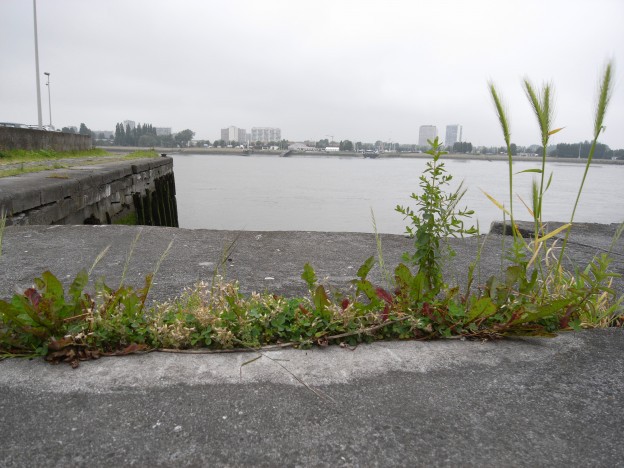First year MFA student Seecum Cheung has been selected to participate in the two week workshop at Studio Roma conducted by Maria Thereza Alves, Iain Chambers, and Lidia Curti: ‘Histories Hidden in Plain Site’.
February 16 – March 1, 2015
Istituto Svizzero di Roma
Studio Roma is an annual, eight-week, transdisciplinary research program at the Istituto Svizzero di Roma, oriented towards experimentation within pedagogical practices in the fields of art and science. Studio Roma questions the production of knowledge inside and outside of academia, highlighting differences and overlaps between institutions in a continuum of places, functions and geographies. Each year the program develops within the framework of a chosen theme, which is explored within varying formats: workshops; field research in the form of travel; events; and common readings. These are conceived in collaboration with invited artists and scholars, MA students, PhD researchers and political activists.
Image credit (right): Maria Thereza Alves, untitled, 2014. Photo (inkjet print on paper), 45×60 cm. Courtesy of the artist.
Histories Hidden in Plain Site
Within the framework of Studio Roma 2015 the artist Maria Thereza Alves in collaboration with scholars Iain Chambers and Lidia Curti has developed a two-week workshop. The scope of this workshop is to explore the shifting and ambiguous zones that constitute borders – both the physical and immaterial confines that signal transit between different territories of understanding and belonging. Borders, however flexible and shifting they turn out to be in the modern world, are ultimately sites of authority, whether these are between Europe and the extra-European world, or between disciplines and their claims on understanding. Borders seek to contain and separate, to define and direct, from global population flows to the micro bio-politics of racial and gender difference. At the same time, as we know so well, they are constantly being traversed and betrayed by the continual passage of bodies, histories, cultures, languages and knowledges that refuse to remain fixed and respect their rules and requirements. Histories Hidden in Plain Sight explores these tensions and frictions – in both ethical and aesthetical terms – seeing how they can open up unexpected spaces and possibilities, both in critical and artistic work.
During the workshop, the artist Maria Thereza Alves, together with the fellows of Istituto Svizzero di Roma and participants from many European cities, will look closely at flora in Rome. Before one of its renovations, the Colosseum had been a heaven for plants that arrived via people and animals. The 19th century botanist, Elisabetta Fiorini Mazzanti has listed 272 species. How have these plants arrived in Rome? What are the non-indigenous plants? What non-indigenous plants have become so ubiquitous as to be perceived as native? Where do the ingredients of Roman dishes come from originally? These are some of the questions that will be raised in the different formats of Botanical Evidences of Movement, Migration and Commerce. In an attempt to understand the way of observing and redefining the Roman landscape departing from official narrations and from other potential stories.
Gender, race, nation, citizenship, the Mediterranean, the border, the necessity for counter-archives and the means of memory will be some of the themes scholars Iain Chambers and Lidia Curti will deal with in Borderscapes: Migration and the Hybridisation of Space and Time, the second part of the workshop. Historians, sociologists, directors, activists, musicians, and workers from museums, educational and cultural institutions have been invited to contribute.
Biographies
Maria Thereza Alves is an artist whose work questions the social circumstances we take for granted and looks at how we identify ourselves, and the things around us. In the 1980s, Alves co-founded the Green Party of Brazil. She has worked in the Pantanal swamps of Brazil, the mountain village of Matsunoyama in Japan, the industrialized mega-port of Guangzhou in China, the village of Amatlan in central Mexico, the agricultural village of Fadiouth in Senegal and throughout Europe. She has exhibited in the 3rd Guangzhou Triennal, Manifesta 7, the 2nd Athens Biennal, the 10th Lyon Biennal and documenta 13.
Iain Chambers is Professor of Cultural and Postcolonial Studies at the Università L’Orientale in Naples where he is also President of the Centre for Postcolonial and Gender Studies; he is in charge of project MeLa*: European Museums in an Age of Migrations. Among his publications in English are: Mediterranean Crossings: The Politics of an Interrupted Modernity (2008), Culture After Humanism: History, Culture, Subjectivity (2001), and The PostColonial Question: Common Skies, Divided Horizons (1996) edited with Lidia Curti.
Lidia Curti is Honorary Professor of English Literature at Università L’Orientale of Naples. She has published studies on Shakespeare and the contemporary anglophone theatre, on feminist and postcolonial thought and on women’s literature of the migration to Italy. Among her publications are: Female Stories, Female Bodies (1998), La voce dell’altra (2006), The Postcolonial Question (1997), La nuova Shahrazad (2004), Schermi indiani, linguaggi planetari (2008) and Shakespeare in India (2010).
For this workshop, within Studio Roma 2014/2015, selected participants have been invited from the following Art Academies:
Academy of Fine Arts Vienna, Berlin University of the Arts, École nationale supérieure des Beaux-Arts de Paris, FHNW Academy of Art and Design (Basel), Mimar Sinan Fine Arts University (Istanbul), Piet Zwart Institute (Rotterdam), The Royal Institute of Art (Stockholm), Trondheim Academy of Fine Art, University of Fine Arts of Hamburg, La Sapienza Università di Roma (Rome).
For further information: Istituto Svizzero di Roma
Via Ludovisi 48 – 00187 Roma T.+390642042620 arte@istitutosvizzero.it

